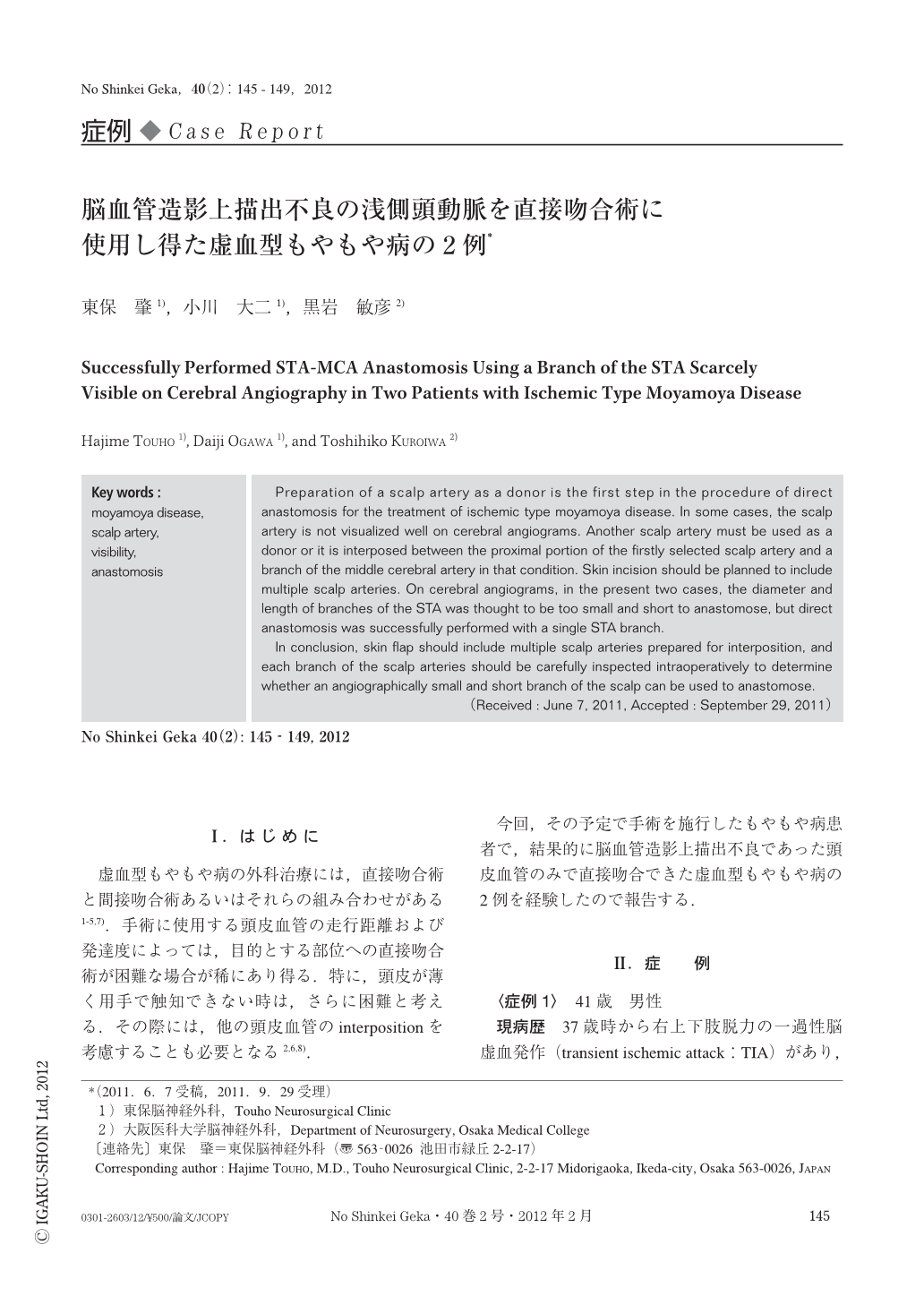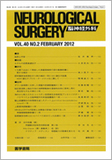Japanese
English
- 有料閲覧
- Abstract 文献概要
- 1ページ目 Look Inside
- 参考文献 Reference
Ⅰ.はじめに
虚血型もやもや病の外科治療には,直接吻合術と間接吻合術あるいはそれらの組み合わせがある1-5,7).手術に使用する頭皮血管の走行距離および発達度によっては,目的とする部位への直接吻合術が困難な場合が稀にあり得る.特に,頭皮が薄く用手で触知できない時は,さらに困難と考える.その際には,他の頭皮血管のinterpositionを考慮することも必要となる2,6,8).
今回,その予定で手術を施行したもやもや病患者で,結果的に脳血管造影上描出不良であった頭皮血管のみで直接吻合できた虚血型もやもや病の2例を経験したので報告する.
Preparation of a scalp artery as a donor is the first step in the procedure of direct anastomosis for the treatment of ischemic type moyamoya disease. In some cases,the scalp artery is not visualized well on cerebral angiograms. Another scalp artery must be used as a donor or it is interposed between the proximal portion of the firstly selected scalp artery and a branch of the middle cerebral artery in that condition. Skin incision should be planned to include multiple scalp arteries. On cerebral angiograms,in the present two cases,the diameter and length of branches of the STA was thought to be too small and short to anastomose,but direct anastomosis was successfully performed with a single STA branch.
In conclusion,skin flap should include multiple scalp arteries prepared for interposition,and each branch of the scalp arteries should be carefully inspected intraoperatively to determine whether an angiographically small and short branch of the scalp can be used to anastomose.

Copyright © 2012, Igaku-Shoin Ltd. All rights reserved.


